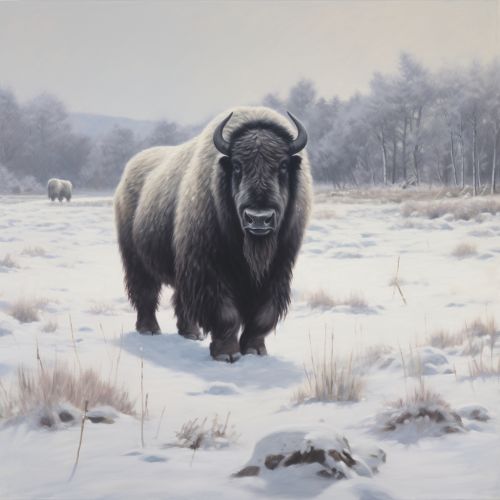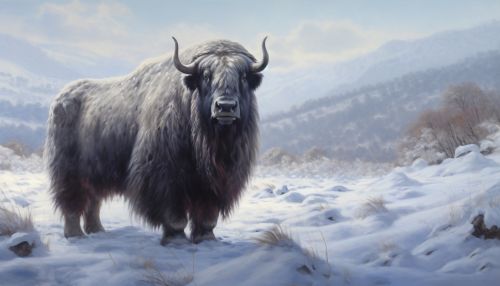Musk Ox
Taxonomy and Evolution
The Musk Ox (Ovibos moschatus) is a member of the Bovidae family, which includes other large hoofed mammals such as cows, goats, and sheep. The species is believed to have evolved in the temperate regions of Asia around 750,000 years ago, before migrating to North America over the Bering Land Bridge during the Pleistocene epoch.


Physical Characteristics
Musk oxen are notable for their thick, shaggy coats, which are well-adapted to the harsh Arctic conditions in which they live. The outer layer, known as guard hair, can reach lengths of up to 60 cm (24 in), while the under layer, or qiviut, is one of the warmest natural fibers in the world. The species is also characterized by its large, curved horns, which are present in both males and females, though those of the males are larger and more pronounced.
Behavior and Ecology
Musk oxen are social animals, typically living in small herds of between 10 and 20 individuals. They are known for their defensive behavior when threatened, forming a protective circle around the young and weaker members of the herd. Their diet primarily consists of grasses, willows, and other Arctic vegetation, and they have a specialized digestive system that allows them to extract nutrients from these low-quality food sources.
Conservation Status
The musk ox was hunted to extinction in many parts of its range during the 19th and early 20th centuries, but conservation efforts have since led to a recovery in population numbers. The species is currently listed as of 'Least Concern' on the IUCN Red List, though it remains vulnerable to threats such as climate change and habitat loss.
Cultural Significance
Musk oxen have been an important part of indigenous cultures in the Arctic for thousands of years. The Inuit and other native peoples have traditionally hunted the musk ox for its meat, hide, and qiviut, which is used to make warm, durable clothing. The species also features prominently in many indigenous myths and legends.
